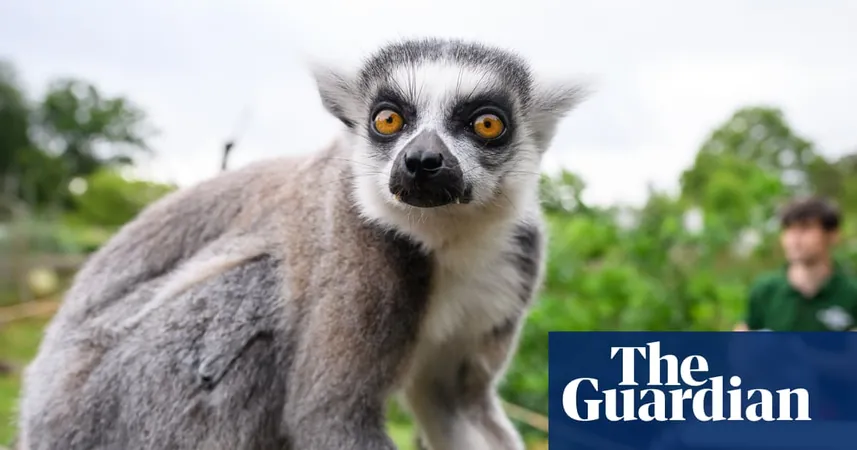
Unlocking Intelligence: How Longer Thumbs Might Mean Bigger Brains in Primates!
2025-08-27
Author: Wei Ling
The Fascinating Link Between Thumb Length and Brain Size
It seems that in the world of primates, length really does matter—especially when it comes to thumbs! A groundbreaking new study reveals that longer thumbs are unexpectedly linked to bigger brains in these fascinating mammals.
Dr. Joanna Baker, the lead researcher from the University of Reading, explains that this intriguing relationship suggests a co-evolution of brain size and manual dexterity. Imagine a primate, or even early humans, becoming smarter, which in turn enhanced their hand skills—leading to more effective actions and tool use.
The Evolutionary Advantage of Dexterous Thumbs
It's well-known that large brains and manual dexterity played a crucial role in human evolution. The development of opposable thumbs has given our ancestors the ability to grip and manipulate objects with remarkable precision, paving the way for tool creation and usage.
But this study raises a critical question: Does thumb length alone influence tool use among primates? The researchers examined the thumb length and estimated brain mass of 94 primate species, ranging from ancient hominins to modern lemurs.
Who Stands Out in the Primate World?
Published in the journal *Communications Biology*, the results show that humans and most hominins possess thumbs that are unusually long compared to other primates. Surprisingly, the study found a consistent pattern—primate species with longer thumbs typically have increased brain sizes.
As Baker notes, 'If you have a longer thumb, you have a larger brain, regardless of species.' This means that longer thumbs are not just a human trait; they’re linked to brain size across the primate lineage.
An Anomaly in the Primate Kingdom
However, an early hominin, *Australopithecus sediba*, defies this trend. Despite its longer-than-expected thumb—after adjusting for brain size—it's believed this adaptation relates to its diverse environment of both trees and ground living.
Neocortex: The Brain's Command Center
Delving deeper, the researchers discovered that the neocortex, the region responsible for higher cognitive functions, is particularly larger in primates sporting longer thumbs. This revelation was unexpected as many assumed it would be the cerebellum, involved with motor control.
Complexity of Human-Like Dexterity
Despite the findings, Baker cautions against oversimplifying the relationship between thumb length and tool use. The similarities in brain size across diverse primate species suggest that other traits contribute significantly to manual dexterity.
Dr. Fotios Alexandros Karakostis, a biological anthropology expert, reinforces the notion that while thumb length and brain size show an intriguing link, they don't tell the whole story. Understanding human-like dexterity will require a more nuanced examination involving various anatomical traits and neural mechanisms.
The Journey Ahead in Primate Research
As this study opens new doors into understanding evolutionary biology, it highlights the complex relationship between anatomy and intelligence. Future research promises to unravel more about how selective pressures have sculpted not just the hands but the minds of our primate cousins.


 Brasil (PT)
Brasil (PT)
 Canada (EN)
Canada (EN)
 Chile (ES)
Chile (ES)
 Česko (CS)
Česko (CS)
 대한민국 (KO)
대한민국 (KO)
 España (ES)
España (ES)
 France (FR)
France (FR)
 Hong Kong (EN)
Hong Kong (EN)
 Italia (IT)
Italia (IT)
 日本 (JA)
日本 (JA)
 Magyarország (HU)
Magyarország (HU)
 Norge (NO)
Norge (NO)
 Polska (PL)
Polska (PL)
 Schweiz (DE)
Schweiz (DE)
 Singapore (EN)
Singapore (EN)
 Sverige (SV)
Sverige (SV)
 Suomi (FI)
Suomi (FI)
 Türkiye (TR)
Türkiye (TR)
 الإمارات العربية المتحدة (AR)
الإمارات العربية المتحدة (AR)